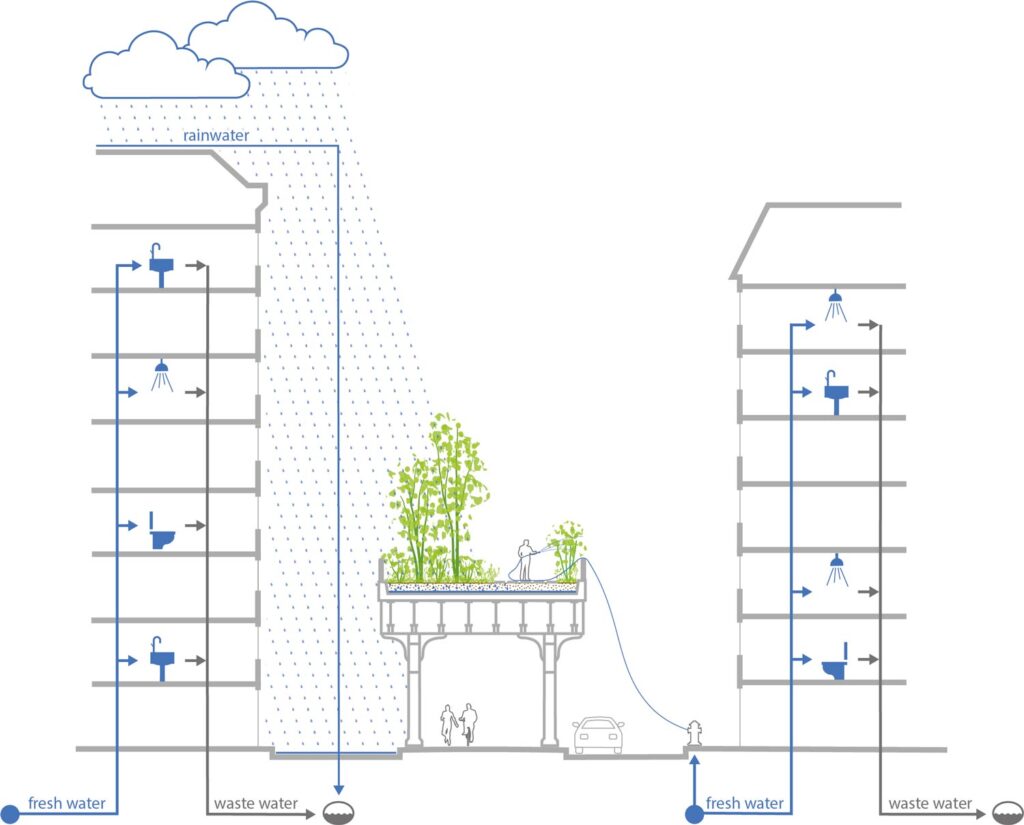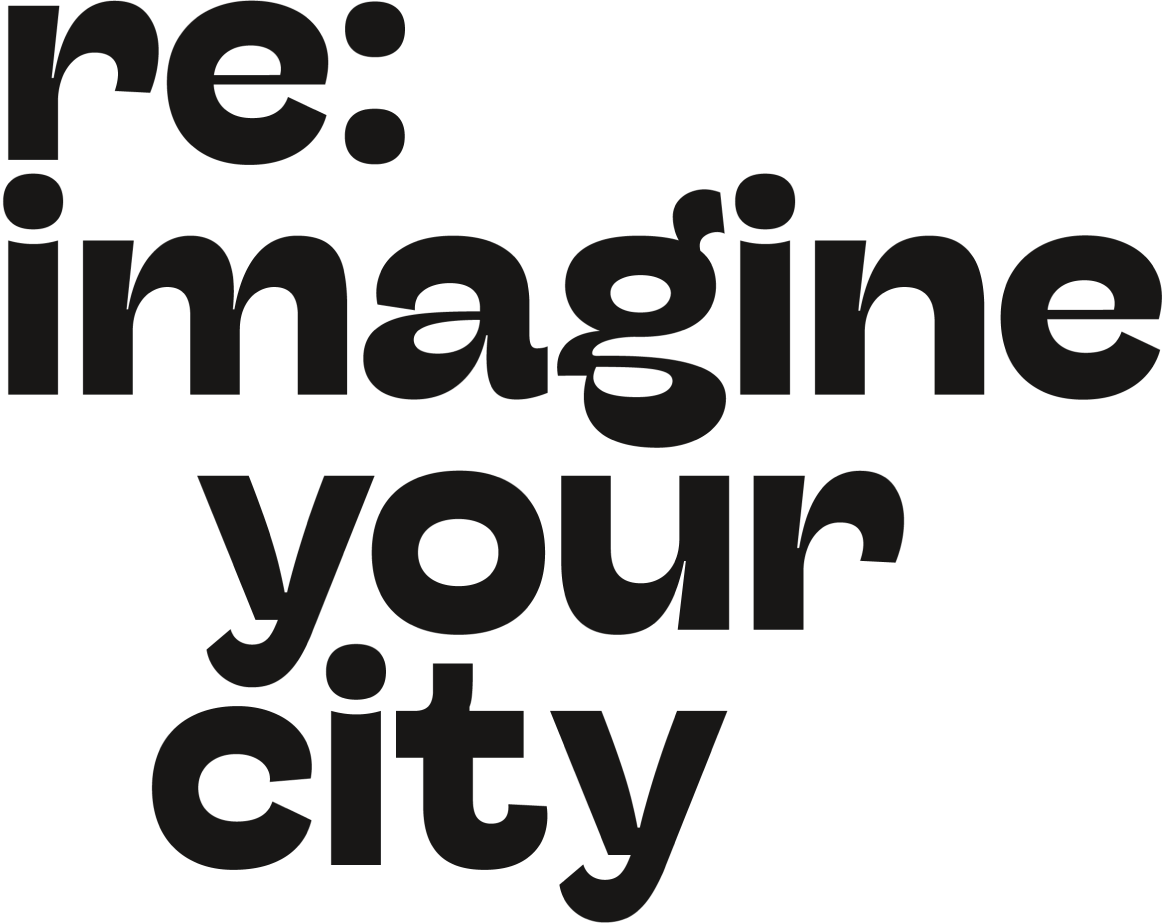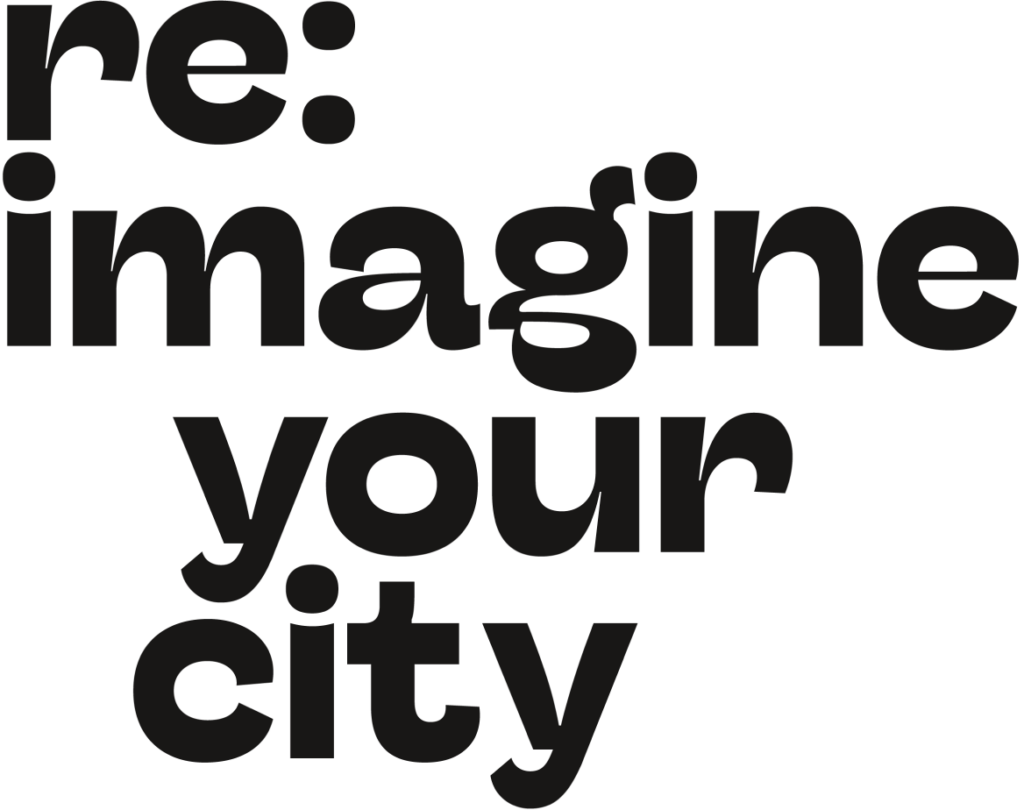At a time when more than half of the world’s people live in cities, and the effects of climate change are becoming visible, urban climate adaptation is of special importance. Densely populated areas have a high degree of sealed surfaces. As we are already experiencing hot summers, this leads to the so-called urban heat island effect. On particularly hot days, the temperature difference between cities and the cooler surrounding countryside can be as much as 10°C. In the case of heavy rain, local flooding also occurs more quickly in urban areas due to the high degree of surface sealing. These extreme weather events are particularly dangerous for vulnerable groups of the population. It is estimated that Europe-wide excess mortality in the months of the 2003 heatwave summer was 70,000 people, including almost 45,000 in August. Recent research shows that doubling the number of urban trees in metropolitan areas could reduce the number of heat-related premature deaths by 40 per cent.
In landscape planning, the blue-green infrastructure principle has been established over the last few years. This involves creating a network of natural and semi-natural areas, such as parks, green spaces and river courses, to provide ecosystem services. These forms of urban nature provide natural cooling on hot days and can also retain and infiltrate rainwater on site.
In addition to blue-green infrastructure, there are other concepts of urban climate adaptation. My analysis of existing projects that include nature-based solutions with water and vegetation showed that either the aspects of sustainable water management or green infrastructure are prioritised. The initial question and motivation then determine the approach for the respective project. I have described this difference as a blue or green perspective.
In the blue approach, quantitative and qualitative fluctuations in the urban water balance are balanced and oriented as closely as possible to the natural water cycle. This approach, developed in Australia, considers all water flows occurring in the urban space, such as precipitation, wastewater and groundwater, as high-quality resources and is called Water Sensitive Urban Design. Another example is the principle of the sponge city, which originated in China. Here, urban surfaces are designed in such a way that rainwater is absorbed like a sponge and released again in dry periods. All blue planning approaches have in common that decentralised measures create smaller water cycles, reducing urban runoff and preventing flooding during heavy rainfall.

On the other hand, there is climate-effective urban greening with parks, street greening and new forms of building greening. When designed in a network, these systems are referred to as green infrastructure. The benefits range from natural cooling to improving air quality, biodiversity, and environmental justice. Projects developed from a green perspective bring these aspects of urban design to the fore. The issue of water supply receives secondary attention, although it is essential in view of climatic changes. Densely greened façades or free-standing vertical systems, in particular, require permanent artificial irrigation, while in the summer months, there is a double gap in water supply: rising temperatures call for more urban vegetation to cool overheated cities, while water availability decreases as precipitation increasingly shifts to the winter months. Every year, numerous urban trees in regions with low precipitation already dry out due to water scarcity in the summer and the need to conserve drinking water as a precious resource. There is an opportunity to use alternative water resources such as rainwater or grey water (low-polluted wastewater) for irrigation in order to save drinking water. This requires a synergetic combination of the blue and green perspectives.

In this context, I have developed the concept of blue-green architecture. The aim is to bring together the described planning approaches at the building level and consider water management and urban green systems in the design process from the beginning. Water availabilities and water demands are coordinated in the best possible way, and the effectiveness of the realised measures is increased by this synergetic approach.
Multifunctional systems are created that are able to respond to extreme weather events such as overheating and heavy rainfall and mitigate negative consequences. Such designed projects positively contribute to the population’s health, the quality of life in cities and urban nature. Planning in an interdisciplinary team is decisive for the synergetic combination of blue and green objectives towards blue-green solutions.
Dr. Friederike Well is an architect and conducts research on climate-positive urban design and architecture. Her doctoral thesis is entitled ” Blue-Green Architecture: Integrated Design with Water and Vegetation.” Since 2022, she has been coordinating the Centre for Urban Nature and Climate Adaptation at the Technical University of Munich.


